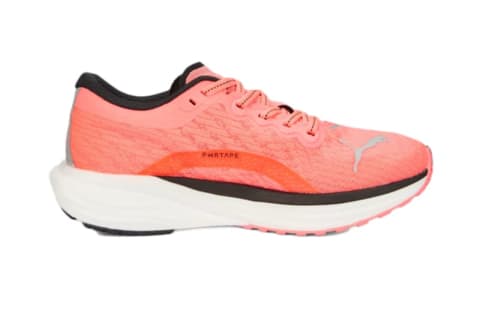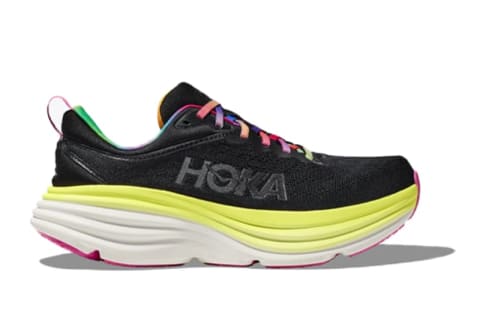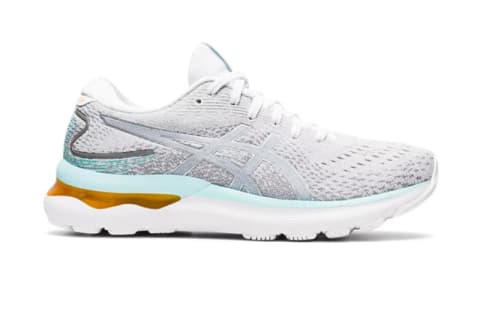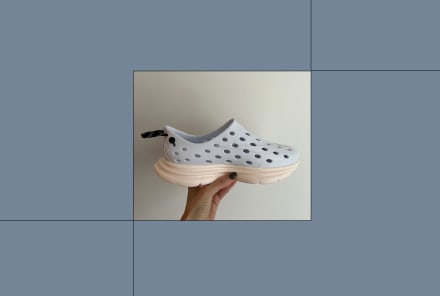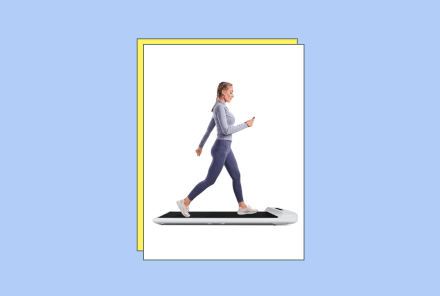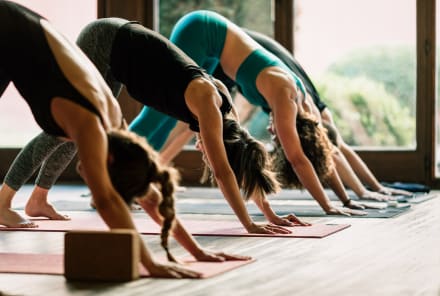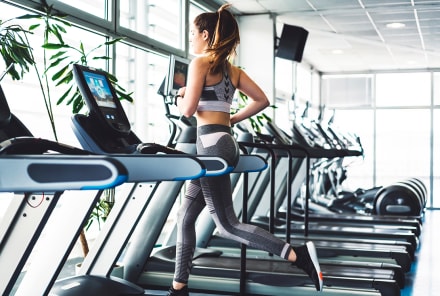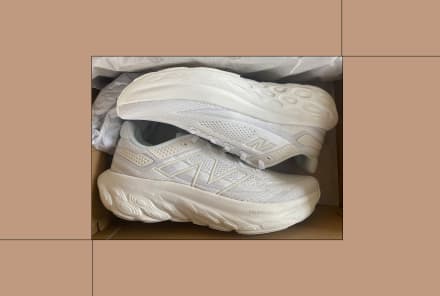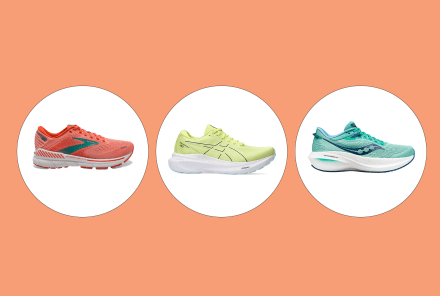Advertisement
How To Pick Running Shoes, According To A Podiatrist

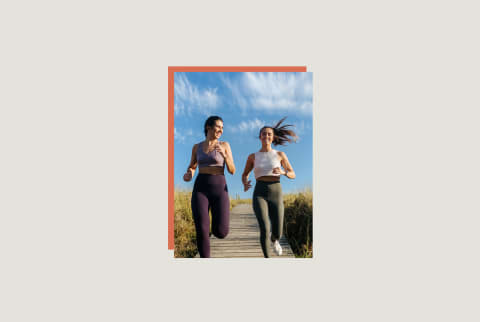
Whether you're a seasoned marathoner or a running newbie, your running shoes matter. Not only are your sneakers key for lasting comfort and performance, but they're also critical for injury prevention. That's why it's important to understand how to pick the right running shoes.
According to surgical podiatrist Nelya Lobkova, choosing the best running shoes comes down to budget, preferred style, gait, and the surface you run on—and she has a few helpful tips for how to find your perfect fit.
What factors are important when picking running shoes?
Running shoes come in a lot of shapes and sizes. The type you choose depends on a few factors:
Fit, cushioning, and support
Of course, you'll want to pick running shoes that feel comfortable on your foot and offer ample cushioning and support with each step.
Weight
Running sneakers should be lightweight and breathable. A lightweight running shoe allows you to run more freely and comfortably without feeling weighed down.
Running surface
Each terrain requires a specific type of running shoe. For example, Lobkova explains that trail running requires trail running shoes, which have thick rubber outsoles.
Road running shoes, on the other hand, are designed specifically for paved surfaces.
Heel drop and gait
If you run on the ball of your foot, you'll need different shoes than those who land on their heels. To learn more about your gait, visit a podiatrist or specialty running store.
A few of the best running shoes:
What are the different types of running shoes?
Lobkova says there are three main categories of running shoes: neutral, stability, and motion control (aka high support).
Here's what you need to know about each:
- Neutral: These have a minimal amount of rigidity in the midsole foam of the shoe. "[Neutral running shoes] are meant for those whose heels strike at a normal angle during running," Lobkova explains.
- Stability: Stability running shoes have a more rigid midsole and are meant for runners whose heels strike at an inward-tilted angle (also known as overpronation). These shoes often have guide rails to control side-to-side motion.
- Motion control: Motion control running shoes are the most stable and are meant for runners with moderate to severe overpronation. Motion control shoes typically have firm posts to reinforce the arches.
How should running shoes fit?
In short: Running shoes should fit snugly. Here's a good basic test, according to Lobkova:
To determine whether a running shoe fits, pinch the tip of the sneaker. There should be approximately half an inch of space between the end of the longest toe and the edge of the sneaker.
"A running shoe that is too big can cause damage to toes, and a running shoe that is too small often causes damage to the toenails," Lobkova explains.
What is heel drop in running shoes?
Heel drop is the difference in height between the heel and the forefoot of the shoe. It's typically measured in millimeters.
A higher heel drop means the heel is higher than the forefoot, while a lower heel drop means that the heel is closer to the forefoot. Zero-drop running shoes (also called minimalist running shoes) have no drop whatsoever, giving a barefoot running feel.
What is gait?
Gait is the pattern of foot movements we make when we walk or run. It's influenced by a few factors, such as your foot type, muscle strength, range of motion, and more.
Regardless of the type of gait you think you have, Lobkova recommends getting a gait analysis to determine how much support you need in the midfoot of your shoes.
Gait analysis is often performed in specialty running shops and many sports-oriented podiatry offices, she says. The analysis helps determine which type of shoe is best for you.
How does heel drop affect gait?
A higher heel drop can cause someone to place weight on their heel with more force when they walk or run, often leading to shin splints or other injuries.
A lower heel drop causes the foot to land more gently on the ground, which is less stressful for the body.
Common mistakes when picking running shoes
When deciding what type of running shoes you should wear, avoid these common mistakes:
Not getting fitted by a professional
Per Lobkova, it's important to get properly fitted by a professional at a shoe store to find the right pair of shoes for your foot and running style.
"Proper sizing and a gait analysis should prevent potential problems with running shoes, such as nerve impingement, tendinitis, heel pain, stress fractures, and ankle sprains," she says.
Wearing the wrong size
Running shoes should fit snugly but comfortably. Lobkova recommends leaving half an inch of space between the end of the longest toe and the edge of the sneaker for adequate toe box space.
Choosing the wrong type for your running surface
Wearing shoes for the wrong terrain can lead to injury and discomfort.
If you plan on running on trails, Lobkova recommends a pair of trail running shoes, which have more tread and offer more traction for uneven surfaces.
Road running shoes and treadmill running shoes are designed for smoother surfaces.
Track shoes often have spikes to provide extra traction when you push off the ground during a race.
Not knowing when to replace running shoes
Running shoes should be replaced sometime between 300 and 600 miles (or sooner if they show signs of wear and tear).
For more on how long running shoes last and some helpful hints on how to know it's time to replace them, check out our guide.
A few of the best running shoes:
FAQ:
Do you want running shoes tight or loose?
Surgical podiatrist Nelya Lobkova says you want your running shoes to be snug. "Laces that are too loose or, conversely, too tight are common signs that the shoe is not the right fit and the lacing is being done to compensate for poor fit," she adds.
What are the five types of running shoes?
The five types of running shoes are neutral shoes, stability shoes, cushioned shoes, lightweight shoes, and trail-running shoes.
Is more cushioning better for running?
This is ultimately up to you. "The amount of cushion in the midsole measures how much impact (or shock) is absorbed from the ground as we run," surgical podiatrist Nelya Lobkova explains.
"As we run, we strike the ground with three times our weight, so we need to absorb the shock coming back toward us from the ground," she adds. "The more cushioning in the midsole of the running shoe, the more shock absorption."
What is the difference between jogging shoes and running shoes?
Jogging shoes and running shoes are designed for different activities, so you can bet that there are some major differences between the two.
Jogging shoes are made for a slower pace and less strenuous activity than running shoes, so they usually feature less cushioning and support. These are great for those who are new to exercise or those who are not training for a specific event (like a 5k or half marathon).
Running shoes are designed for a faster pace and more intense activity. They have lots of cushioning (to absorb the shock that comes with the impact of running) and are generally more responsive, which can help runners improve their performance.
The takeaway
A lot goes into knowing how to pick running shoes. We recommend experimenting with different pairs to find the ones that feel the best for you and your feet. Once you know more about your unique needs, check out our guides for the best running shoes for wide feet, rocker bottom shoes, and zero-drop running shoes.
Watch Next
Enjoy some of our favorite clips from classes
Enjoy some of our favorite clips from classes
What Is Meditation?
Mindfulness/Spirituality | Light Watkins
Box Breathing
Mindfulness/Spirituality | Gwen Dittmar
What Breathwork Can Address
Mindfulness/Spirituality | Gwen Dittmar
The 8 Limbs of Yoga - What is Asana?
Yoga | Caley Alyssa
Two Standing Postures to Open Up Tight Hips
Yoga | Caley Alyssa
How Plants Can Optimize Athletic Performance
Nutrition | Rich Roll
What to Eat Before a Workout
Nutrition | Rich Roll
How Ayurveda Helps Us Navigate Modern Life
Nutrition | Sahara Rose
Messages About Love & Relationships
Love & Relationships | Esther Perel
Love Languages
Love & Relationships | Esther Perel
